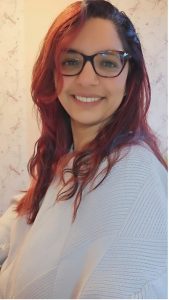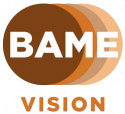
I’m Mona, a South Asian woman born in London, now residing in Wales with my husband and three kids. I have a visual impairment called keratoconus and I’ve recently discovered I have ADHD and possibly some form of autism.
Reflecting on my childhood in the ’90s, signs of autism and ADHD were subtly present. I grappled with emotional challenges, academic pressure, and sensory overload, laying the foundation for a profound journey into neurodiversity. Recognising these traits in my parents only came later, emphasising the importance of early identification and support, a concept that has evolved significantly since my youth.
Navigating neurodiversity within an Indian background presented unique challenges. Expected to conform as the “good Indian daughter,” I yearned for freedom and self-expression. Dropping out of university due to keratoconus and the overwhelming sense of being different, I found myself drifting through various jobs until the whirlwind of motherhood brought a new set of struggles, including post-natal depression.
Diagnosed with various mental health labels, I grappled with guilt and sought explanations. It wasn’t until my son’s high school years that the signs of ADHD mirrored my own experiences. Researching ADHD brought not just personal clarity but also a realisation of the need for awareness and acceptance within diverse communities.
In the ’90s, my signs of neurodiversity were evident, but understanding came with time. Growing up I was academically extremely bright but could not accept anything less than perfection as I would consider that to mean I’m a failure and unworthy. I would either zone out or get distracted quite easily, get overwhelmed in noisy environments and get extremely frustrated at what I thought were injustices. Recognising similar traits in my parents and now my own kids underscore the importance of early identification and support. While my journey involved challenges, the evolving understanding of neurodiversity offers hope for smoother paths for future generations to help identifying symptoms easier.
My parents wanted to protect my brother and I from the racism and prejudice they felt when they came to this country. The best way to do that was to get a good education, assimilate and become professionals worthy of respect in society. On the outside, I appeared grateful, courteous and amicable but inside I wanted to travel, study music, fall in love and feel free and I couldn’t articulate why I found that so suffocating without a burst of anger or inconsolable tears. This is not uncommon amongst us first gen kids, but my friends around me seemed ok with it, whereas I was burning up inside.
A common challenge I found, in breaking through stigmas around neurodiversity involved the cultural attitudes to work. For our parents, there was little choice other than hard graft to make a life in a new country so explaining concepts such as executive dysfunction AKA ‘ADHD paralysis’ got construed as an excuse for being lazy. However, the fact that these discussions are happening is progress and I’m confident that attitudes within community will evolve.
When I became a mum at 24, post-natal depression hit me hard. I didn’t think I could be any good as a mum if I had sight loss. I couldn’t see if I was changing nappies properly, whether my child had food on his face or not and I was hallucinating. At the time, I was put on anti-depressants and started the first of many rounds of counselling. It was depression. Anxiety. Post-natal psychosis. Bipolar disorder. I collected so many labels to explain away the guilt of being a mum with sight loss, but never really shared how my sight loss was affecting me. I was too scared of being seen as a bad mum, or worse, a mum who needed pity.
I muddled through rounds of counselling and as my sight deteriorated I recognised I needed help, and that was my first sense of relief. The second came when my first born got to high school. The Special Educational Needs Coordinator (SENco) explained the signs of autism and ADHD and the support they could provide for my son to have a healthy relationship with school as he’d been feeling stressed. Whilst going through the signs and symptoms of ADHD, my son looked at me and said, ‘Mum, this is you too!’.
I began researching ADHD and how it presents in women and I felt the relief sweep over me as I related to the condition. Discovering ADHD later in life broadened my understanding of mental health, however, there was very little I could find about the South Asian experience of ADHD.
Balancing visual impairment, ADHD, and daily life necessitates careful navigation. I need to organise my day in advance and stick to a routine because I find last minute changes overwhelming. Recognising and accepting your own quirks is also a part of self-acceptance and self-love. Anyone else here who can’t touch towels with dry hands?
Professionally I need to be mindful of my reactions towards others. It’s usually never personal but I do tend to react first and think later! Those that know me well know understand that my reaction is usually a response to an over stimulating experience. My visual aids, assistive technologies and a supportive family environment has played a pivotal role in managing my unique needs. Moreover, mindfulness practices and setting realistic goals contribute to my sense of accomplishment and well-being.
I’m still looking for services and resources which I can relate, where I can meet another visually impaired, South Asian mums with ADHD and share experiences! In the meantime, I’ve found listening to other women’s experiences with ADHD reassuring and comforting. I usually find stories on social media or read articles from charities such as ADHD Foundation or ADHD Girls. Thankfully, these resources are accessible for my sight loss too. I am continuing with counselling for the time being whilst I understand if my depression and anxiety diagnoses are actually part of my ADHD.
While cultural attitudes toward neurodiversity are evolving, there’s still work to be done. Encouraging open conversations, challenging stereotypes, and fostering understanding within diverse communities contribute to a more inclusive and supportive environment, so keep talking!
My journey encompasses the intersectionality of neurodiversity, cultural expectations, visual impairment and the importance of early identification and support. Through my experiences, I aim to encourage acceptance, where every individual, regardless of neurodivergent traits, feels seen, heard, and valued.
Written by Mona Jethwa
